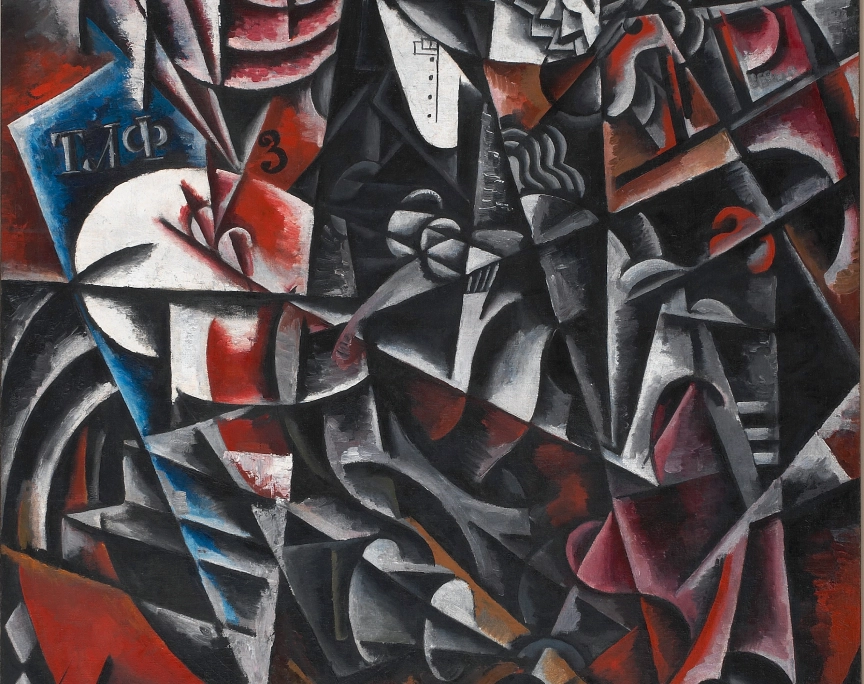Traveling Woman
Liubov Popova
1915, Oil on canvas
158,5 x 123 cm.
The work (entitled Traveling Woman from the Costakis collection at MOMus-Museum of Modern Art in Thessaloniki) is of great interest because one can see that it is a completely synthetic work that encompasses details, elements and experimental forms of all other Popova's works of her final cubofuturistic period.
Fine lines, straight and broken, triangles, squares, and arcs, and semicircles, despite the apparent chaotic construction, form a unified and harmonious composition.
Multiple parallel and intersecting facets and planes, superimposed on each other, do not hinder the recognition of individual objects. In the painting, one can easily distinguish letters forming words, faces, cylinders, waves, and various other images.
The painting creates the impression of dynamic movement in time and space, as if the objects depicted on it are constantly moving or swaying, ready to fly off the canvas.
Scattered figures create a sense of relief, which is enhanced by the plasticity of each drawn line.
The work is painted in a restrained style, characteristic of all cubists. In this piece, the artist possibly attempted to convey impressions of her travels within the country and abroad through individual images, silhouettes, letter combinations. According to another version, the artist tried to convey impressions of the travels of her friend Adelaida Dege.
The painting Travelling Woman and several other works from this period are associated with Popova’s transition to cubo-futurism and non-representational art.

